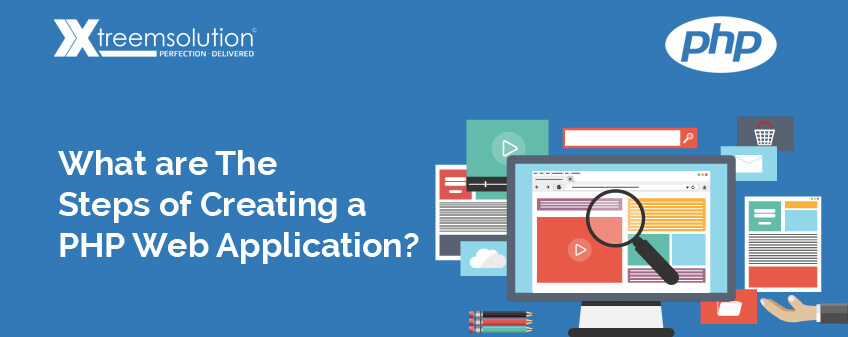When it comes to web application development, it needs to be interactive, capable of performing various transactions as well as dynamic. The websites are no longer made up of static pages. Now, the developers have been using tools as well as programming languages which help them to develop customised web pages as well as develop shopping applications along with tracking the behaviour of the users.
With PHP you essentially write HTML script which has embedded code that is delineated with a special start as well as end tags. This embedded code is then executed on the server end, and then it is sent to the browser. The display on the browser is essentially the result of the execution of the code. It is different for different scripting languages such as Perl and C in which the code is written to provide HTML commands. While there is a similarity to Java, the major difference with the PHP is that the code is essentially executed on the servers while in case of JavaScript the code is executed on the side of the client. With the JavaScript, it is quite possible to find the underlying code while in the PHP the code which is underlying is essentially hidden from the user.
In order to create a PHP web application, one needs to follow certain steps which are being used by numerous PHP website development services. We mention these steps below:
Step 1: Application Definition
The very first step is the requirement to define the application. It helps in getting more useful answers since there are many present all over the place. It defines the features and functionalities of the application and what are their usage.
Step 2: Deciding the Framework
Once you have defined the application, you need to decide the framework, and it is a crucial step after the step 1. There are some categories of the framework which are:
a. Pre-built frameworks
b. A Content Management System or CMS such as WordPress and build on top of different plugins and themes.
c. A custom-made framework.
Step 3: MVC
First, you need to avoid complicated client-server arrangement as well as pitfalls of the different extreme flexibility of the PHP. PHP is essentially a scripting language which is designed to mix with the HTML. You should avoid that. You need to design or even adopt a Model View Controller or MVC approach. Most of the pre-built frameworks come with MVC or a hybrid situated at the centre of the methodology of development. SO, you need to learn about how to design a particular MVC application in the PHP. A good PHP development company lays special emphasis on designing the right MVC application.
Step 4: Restful interface
Let’s assume that you have an MVC, the next step for a particular framework is the design of a particular a RESTful interface in order to make Internet requests, as well as the response, is herewith defined like a data such as a login request as well as the response, a particular page request that includes an HTML document as well as associated files or also an order submission along with the confirmation and many more. In general, you need an entry point where a particular URL can be parsed with an associated GET as well as POST data and also include another type of HTTP methods like PUT and DELETE. You also require to get that up as well as working in order to make requests as well as get the responses which include web pages. This entry point will pass the data into the above-mentioned MVC framework in order to process. The controller will then take the data and then build a particular model as well as requests a view in case it is necessary or simply returns it or merely data or nothing if there is a case of any incorrect requests. The best way is to get the code of a particularly simple and streamlined MVC RESTful framework in case you don’t have any previous knowledge or experience.
Step 5: Security
The most important aspect is Security. Most of the PHP applications are quite prone to different security issues. It is important to make sure that there are no injections in order to run at the command line as well as the data needs to be sanitised at the most minimum level along with the stored data need to be encrypted, along with passwords as well as SESSION attacks to be prevented.
Step 6: HTML Content
In case of HTML content, make sure that you plan for different components and make the SEO flexible.
Now we have discussed the steps of developing a PHP web application, let’s look at the advantages of PHP.
a. It supports connectivity of database as it can access over 20 separate databases which include MS Access, Oracle, MySql.
b. It supports sessions as it can generate unique and distinct session IDs.
c. It eliminates are the problems in client configuration. With PHP, you don’t have to worry if the client has the right software installed as the application is executed on the side of the server.
d. It reduces development time as well as there are many advanced features that are in PHP which makes it a wise decision to hire PHP programmer for web application development.








